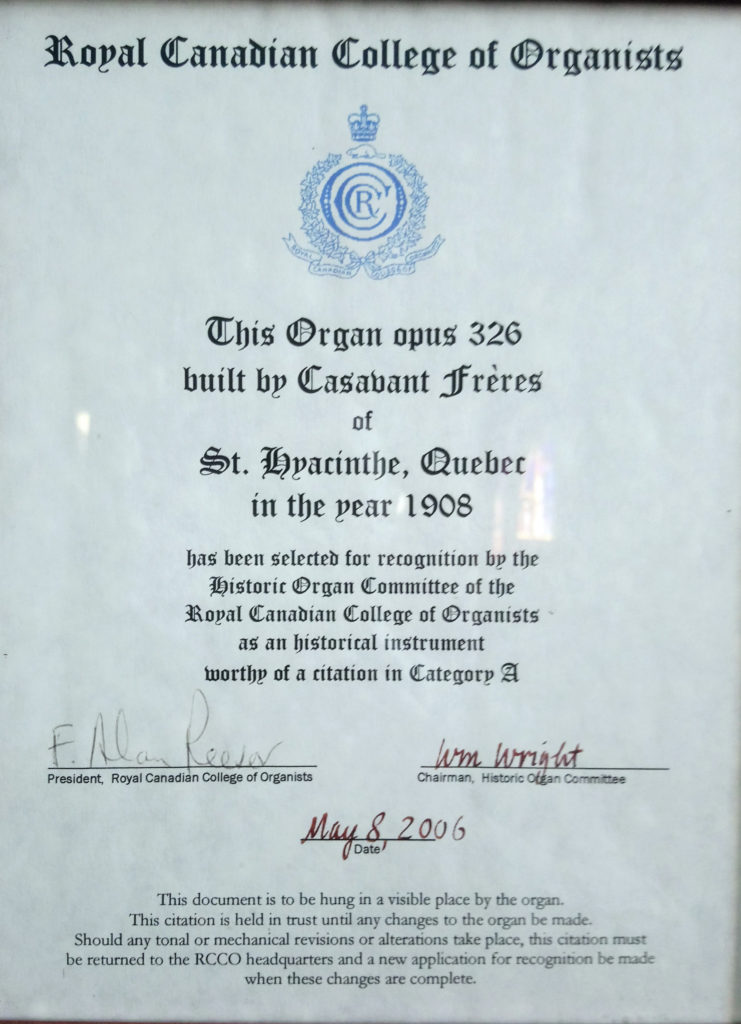
The Royal Canadian College of Organists https://www.rcco.ca/historic-organs has recognized our pipe organ as a Class A historically significant organ which is to say it meets the following criterion (from their website):
- The organ should be at least 100 years old.
- The wind supply may be powered electrically but the original blowing system is still intact.
- There have been no changes made to the chests, tonal work, console, wind system, or organ case.
There are only 25 such instruments recognized in Canada, of which only 8 are Casavants, and only 3 of those are older than ours.
The organ dates to 1908, was built by Casavant et frères (Opus 326 – the 326th instrument built by them) https://www.casavant.ca/ and was likely ordered to be in place in time for the church’s consecration in 1909.
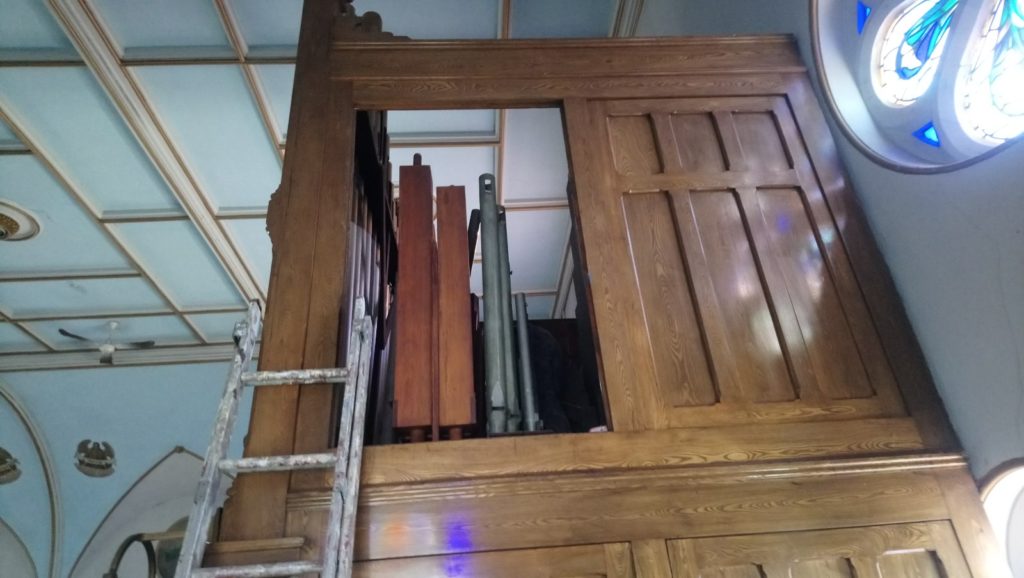
There are two types of “pipes” in this organ. “Flute” pipes, mostly made of zinc (along with much of the tubing that connects the pipes to the console) Some of the flute pipes are wooden – these are associated with the foot pedals on the organ and provide the low bass notes.
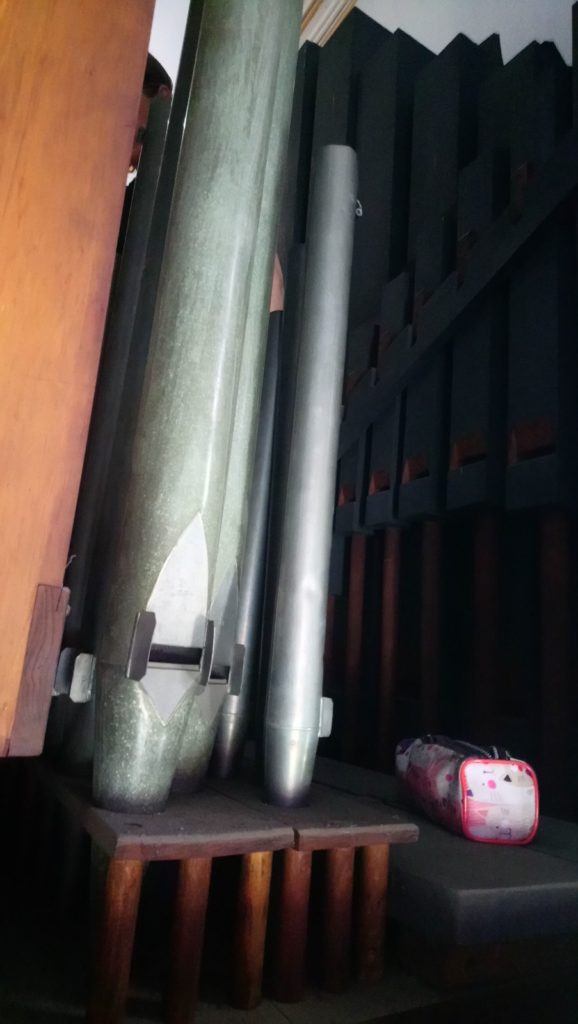
The pink bag was left by one of the Casavant brothers and is original to the organ….actually it was the tool case for one of our tuners – she was further inside the pipes when I took this photo
Finally in the other bank of pipes, the reed pipes are built like a reed instrument (think saxaphone) but instead of a wooden reed it is metal. The reed pipes sound ranges from a bit like a trumpet or french horn to more of a sax sound.
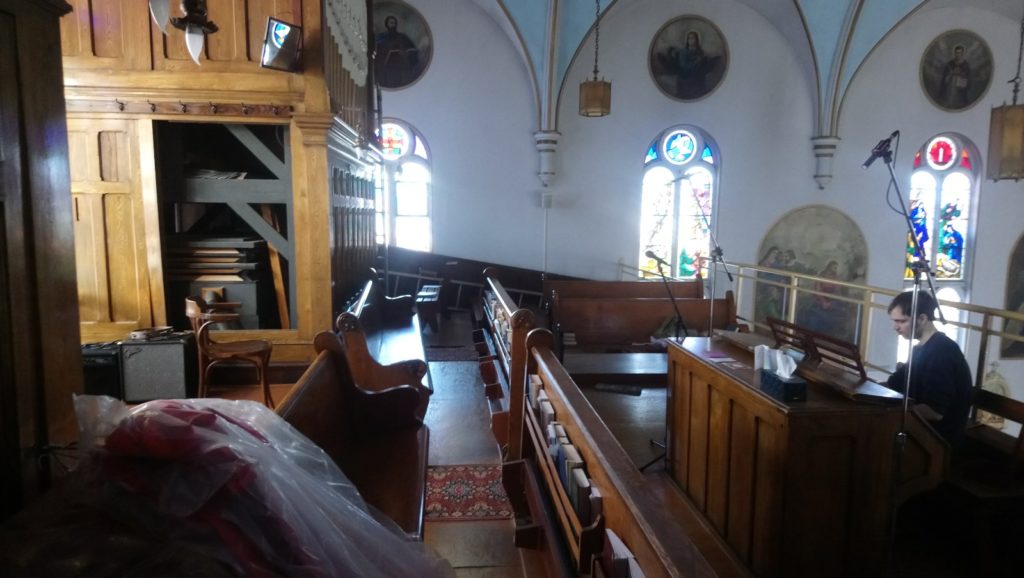
If you are sitting at the keyboard, the gold and white pipes on the right side are real working pipes, the ones in the left bank are decorative. There are 2 manuals and pedal, and 15 speaking stops.
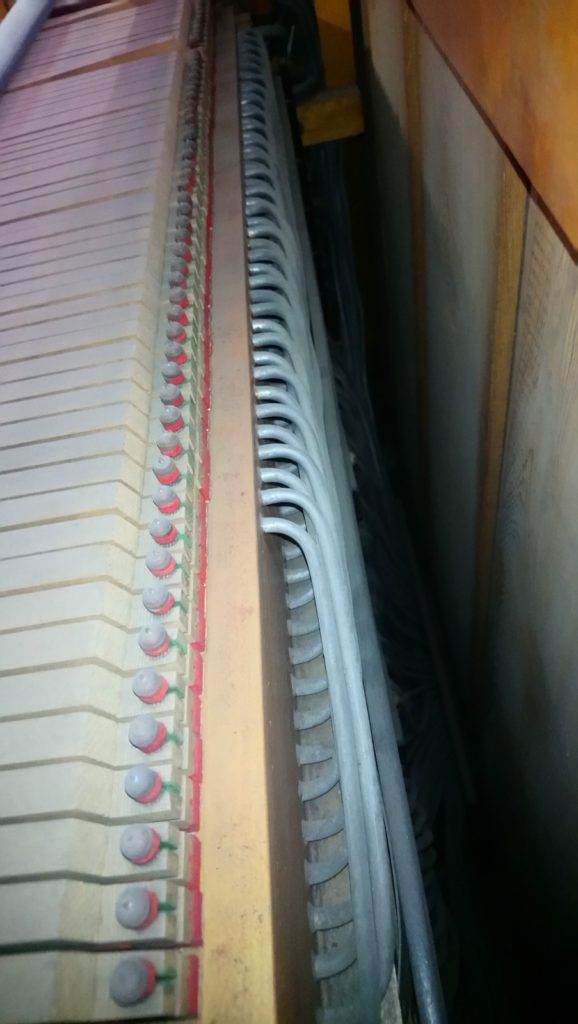
The keyboard touches and stops are all translated to the pipes via the literally hundreds of tiny grey (zinc) tubes you see at the back of the keyboard mechanism. A push on a key or push/pull on a stop lever creates pressure in the tube that moves a mechanism in the pipes. There must be thousands of feet of these tubes in our organ. Mechanically it is quite extraordinary and the oldest Casavant in Hamilton.
